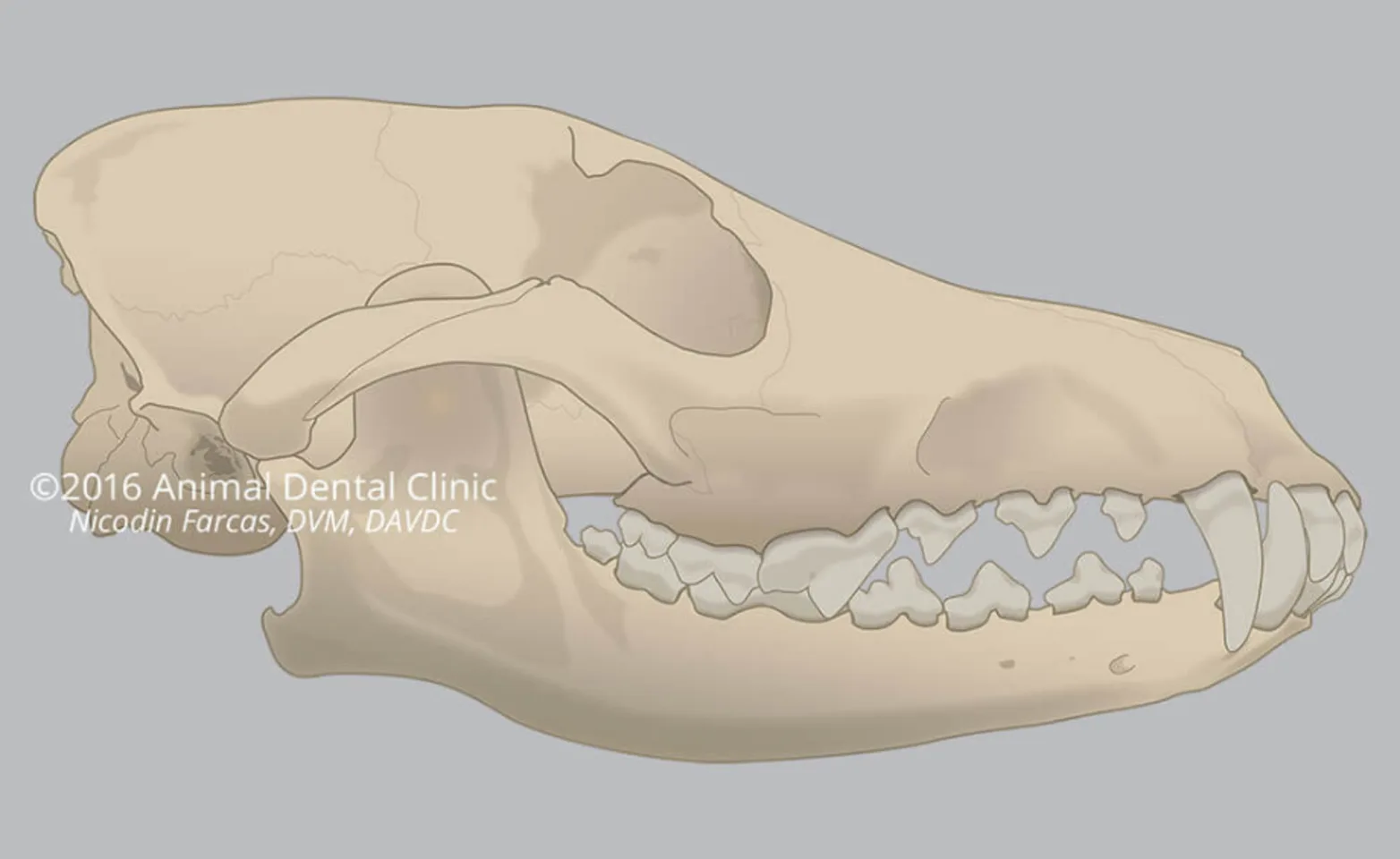Animal Dental Clinic

Veterinary orthodontics may be needed when the teeth, the jaws or the TMJ are misaligned.
The relationship between the teeth of the maxilla (upper jaw) and mandible (lower jaw) can be characterized as either normal occlusion or malocclusion. Normal occlusion means that mandibular teeth interlock with maxillary teeth. The jaws are connected at the temporomandibular joint.

The cause of malocclusion can be the misplacement of the teeth in the jaws, the jaws themselves, or the temporomandibular joint; it may be congenital or acquired. Regardless of the cause, malocclusion can contribute to pain and loss of function ranging from mild to debilitating.
In cats and dogs with normal occlusion, well-aligned mandibular teeth engage in an interlocking pattern with well-aligned maxillary teeth. The interaction between the teeth of the mandible and maxilla allows for catching prey, picking up and carrying food, chewing, and biting. These actions should not result in any trauma.

At Animal Dental Clinic, orthodontic treatments are common and are aimed at restoring function and alleviating pain. The mandible is hinged to the maxilla at the temporomandibular joint (TMJ). The mandible is moved by masticatory muscles against the maxilla. Misaligned teeth, jaws, or temporomandibular joints can cause malocclusion, which may result in oral disease, pain, and loss of function ranging from mild to debilitating.
Diagnosis Of Malocclusion
Gathering detailed information allows for development of the right plan.
Oral examination is helpful to gain preliminary information, but more thorough oral diagnostics including dental radiographs, probing and charting, are needed to plan orthodontic treatment. For malocclusion caused by the misalignment of the temporomandibular joint, advanced imaging may be recommended to more completely evaluate the malocclusion.
Malocclusions can be classified based on oral examination, but oral diagnostics, including dental radiographs and probing are required for treatment planning. When the malocclusion originates in the temporomandibular joint area, advanced imaging such as computed tomography (CT or CAT scan) may be needed to plan treatment.
Consequences Of Malocclusion
Malocclusion can have serious consequences.
Mild malocclusions can cause a variety of other outcomes, from tooth attrition and its associated discomfort to the creation of areas that promote other oral diseases, like periodontitis. For example, a jaw that is too short can result in crowding of teeth, which predisposes to periodontal disease.
More significant malocclusions have the potential to cause serious oral trauma, even to the point where mandibular teeth penetrate the palate. The result of this is called an oro-nasal fistula, which is a communication between the mouth and the nasal cavity. For example, when mandibular canine teeth do not align properly with the maxilla, they can cause trauma to the palate (roof of the mouth). In severe cases, this trauma can even penetrate the palate, causing an oro-nasal fistula, communication between the mouth and the nasal.
There are several potential approaches to solving these problems. Animal Dental Clinic can assess a patient, determine the severity and cause of the problem, and propose a treatment plan to restore a pet’s oral function and alleviate painful conditions.
Orthodontic Treatment
In animals, treatment of malocclusion should prevent further trauma and improve oral function.
If malocclusion causes pain or oral trauma, it should receive treatment. Depending on type and severity of malocclusion, a variety of orthodontic treatments may be employed to reposition teeth. Crown reduction followed by endodontic treatment to reshape teeth or even extractions in selective cases are other options that can be used to restore comfort and function for patients with malocclusion.
